
by Henry P. Olsen
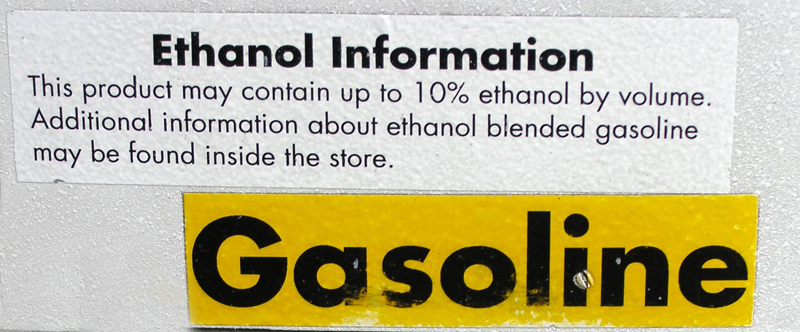
Every state in the U.S. currently sells gasoline with ethanol in it, but several states do not require a label on the pump that informs the consumer of that fact, or of what percentage is used.
The life span of the gasoline you buy at your local station can range from several months to a couple years from the day it was refined depending on how it was stored. The main factors that shorten the life of gasoline are exposure to moisture, air, light, or heat above 80o F. The ideal fuel storage tank is located in a cool, dark place, and is well sealed to keep outside air and moisture away from the gasoline. The gas tank of modern fuel-injected vehicles is sealed and will not allow the gasoline to be exposed to light, but you still have the heat issue to consider. Most vehicles built before 1971 have vented gas tanks, and therefore the gasoline in their tanks will degrade at a much faster rate — it is exposed to the oxygen and moisture in the air that enters through the tank’s vent system.
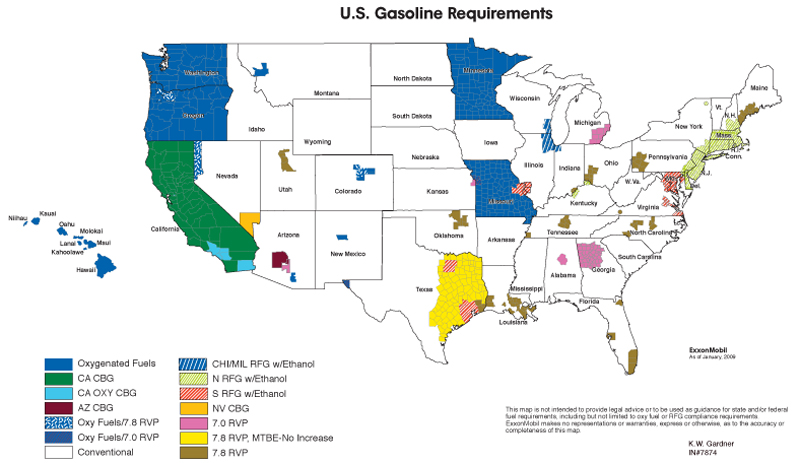
This map shows the various blends of gasoline that are required across the United States as of January 2009.
The first thing that happens to gasoline that is not properly stored is the lighter components in it evaporate, making the gasoline that is left behind a less volatile liquid. The next thing that happens is oxidation — this is what causes old/bad gasoline to give off a sour odor. Oxidized gasoline will also be darker in color and will over time change into a gummy residue. Using oxidized gasoline is always a bad idea since it can clog your fuel filter and create varnish deposits in the fuel pump, lines and the injectors (or the carburetor, if so equipped).
If the gasoline contains ethanol, there is an additional set of potential problems because ethanol is hygroscopic, which means it attracts moisture. So, theoretically gasoline with ethanol should become contaminated more quickly and easily than pure gasoline. If it’s been contaminated with an excessive amount of moisture it will be cloudy in appearance, and when it is allowed to sit the moisture will often drop to the bottom since water is heavier than gasoline.
The reformulated gasoline that is sold across our nation often contains ethanol, and is blended to burn cleaner and reduce smog-forming and toxic pollutants in the air we breathe. Every state currently sells some E10 gasoline; the areas that are not yet at the 10% ethanol level will most likely be mandated to have E10 in the near future. Ethanol is an oxygenate that is used in an effort to reduce the exhaust emissions of the engine. The use of ethanol may or may not actually accomplish this, but this reformulated gas will often cause a vintage carburetor-equipped engine to have driveability and performance problems if it is not tuned for these new blends. There are ethanol analyzers on the market from companies such as OTC/SPX Tool Company and Zeitronix that can supply the user with a reading of the percentage of ethanol in the gasoline you are using, and this type of tool can provide a tuner with some very valuable information that will help him/her make informed tuning decisions.
The gasoline you buy at your local gas station is blend of gasoline, deposit control additives, and ethanol (if required in your area of the country). These components arrive at the fuel terminal as separate compounds and they are blended together to meet the specs for the brand of gasoline it will be sold under. The expectation is that through a process known as “stop light blending†the three components will become a homogeneous blend as the fuel truck travels down the road on its way to the gas station. Gasoline and ethanol are miscible, which means that they will mix together to form a homogeneous solution if they are properly blended. But if blending is not complete, there can be pockets of gasoline that have a higher-than-intended concentration of ethanol in the gasoline retailer’s tank. The maximum ethanol content allowed in pump gasoline sold in the United States as of the year 2010 is 10%, but here in the real world you may accidently get a “hot load†of ethanol.
A much higher volume of regular grade gasoline is sold than of mid-grade and premium — the sales of premium at some discount retailers can be as low as 1 to 3% of their total sales. This means that it is stored in the station’s in-ground tank for an extended period of time, plus the station management will most likely keep their premium fuel tank only ¼ to ½ full. So, premium will be exposed to air that may contain moisture over an extended period of time. Therefore, you should try to buy premium at a station where it makes up a higher percentage of sales. Remember that ethanol and water/moisture are attracted to each other, so any moisture that gets into the storage tank will quickly mix with the ethanol. Once the water/moisture content gets to a certain point, it will cause the ethanol to separate from the gasoline and settle to the bottom of the tank. Since the fuel is also pumped from the bottom of the tank, you do not want to be the “lucky†customer who buys that troublesome, damaging blend of less gasoline and more water and ethanol.
The gasoline you buy at local stations is basically the same from brand to brand other than the deposit-control additive package; the lower-cost chains often use the minimum required of these additives. Several of the higher-quality gasoline retailers sell fuels that are blended to meet the “Top Tier†standards that several of the world’s top auto makers recommend (Mercedes-Benz and BMW, for example); this “Top Tier†gasoline contains a higher level of deposit-control additives.
Quality fuel system cleaner additives such as Chevron’s Techron Concentrate Plus can be used to upgrade any brand of gasoline so it will have a level of detergents that will equal or exceed the deposit control protection of “Top Tier†gasoline.
The major-brand gasoline stations often do a better job of proper housekeeping of their fuel tanks and filters to keep their gasoline free of contaminants and water than many of the discount chains. There are also companies such as Rockett Brand Racing Fuel that offer a higher-quality street-legal 100 octane unleaded gasoline that is blended for maximum performance. Because it is blended from carefully-selected premium hydrocarbons, it has a shelf life of up to two years or more if it is properly stored.

The use of fuel stabilizers and ethanol treatment chemicals such as these can be used to keep your gasoline fresh and help prevent ethanol phase separation and the other harmful effects of gasoline that contains ethanol.
When you are going to store a vehicle or park it for an extended period of time, the best way to avoid any fuel-related problems would be to completely empty the fuel tank and run the system out of fuel, then refill it with fresh gasoline when the vehicle is brought out of storage. If the storage period is from three months to less than a year, a 95% full gas tank is an acceptable choice. The worst choice is a half full or less tank. The oxygen and moisture in the air in the tank will cause the gasoline to destabilize over time, and, if the gasoline contains ethanol, phase separation can occur. That’s what happens when gasoline that contains ethanol is exposed to enough moisture to reach its saturation point. The ethanol will separate from the gasoline and then this the highly-corrosive ethanol/water mixture will settle to the bottom of the tank where it will raise havoc will every part of the fuel system that is exposed to it.

These ethanol treatment chemicals help stabilize gasoline that contains ethanol plus these chemicals will help prevent ethanol phase separation and the other harmful effects of gasoline that contains ethanol.
The use of a fuel stabilizer such as STA-BIL and Eastwood’s Fuel Guard is a very good idea anytime you are going to store your vehicle for more than a couple of months. They are formulated with antioxidants that protect the gasoline from the deteriorating effects of the oxygen in the air, thus increasing the fuel’s stability for up to 12 months. They also contain a corrosion inhibitor to address the ethanol and water corrosion issues, plus detergents to help remove gum, varnish, and other deposits from the fuel system. If your vehicle has a vented fuel tank, the use of a fuel stabilizer is even more important, Marine STA-BIL was formulated for use in a car or boat that has a vented fuel tank. Most motor vehicles produced after 1970 have non-vented tanks, therefore the gasoline is not exposed to as much moisture as a vehicle with a vented tank. Both Eastwood and STA-BIL also offer ethanol treatment chemicals that will stabilize gasoline that contains ethanol, plus these chemicals will help prevent ethanol phase separation and other harmful effects.
Sources:
www.otctools.com 1-800-533-6127
www.goldeagle.com 1-800-367-3245
www.eastwood.com 1-800-343-9353
www.toptiergas.com
www.techronconcentrate.com https://www.chevronlubricants.com/en_us/home/learning/about-our-brands/techron.html 1-800-689-3998
www.zeitronix.com 1-310-328-1234

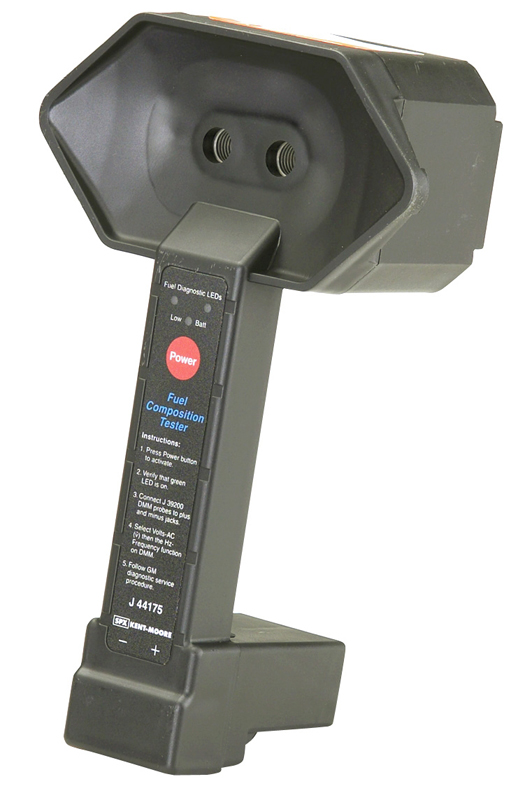
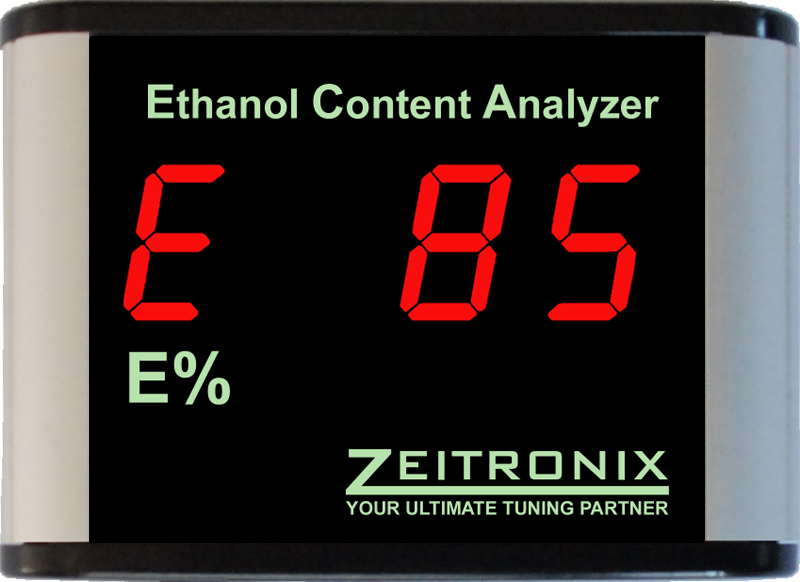
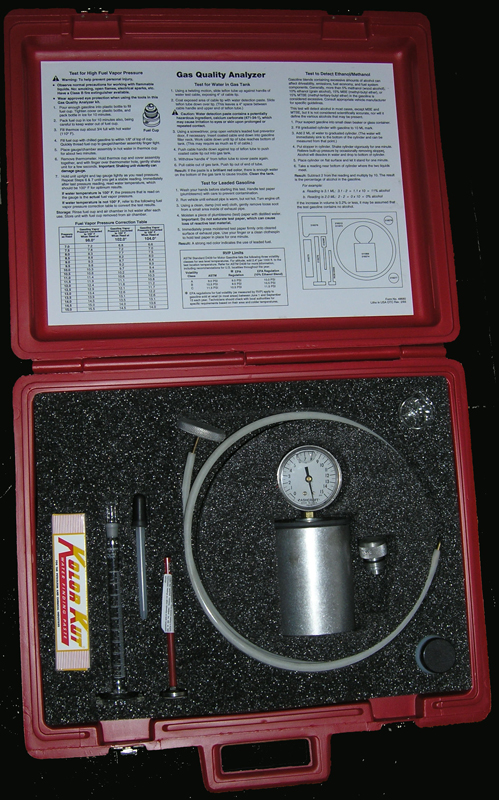

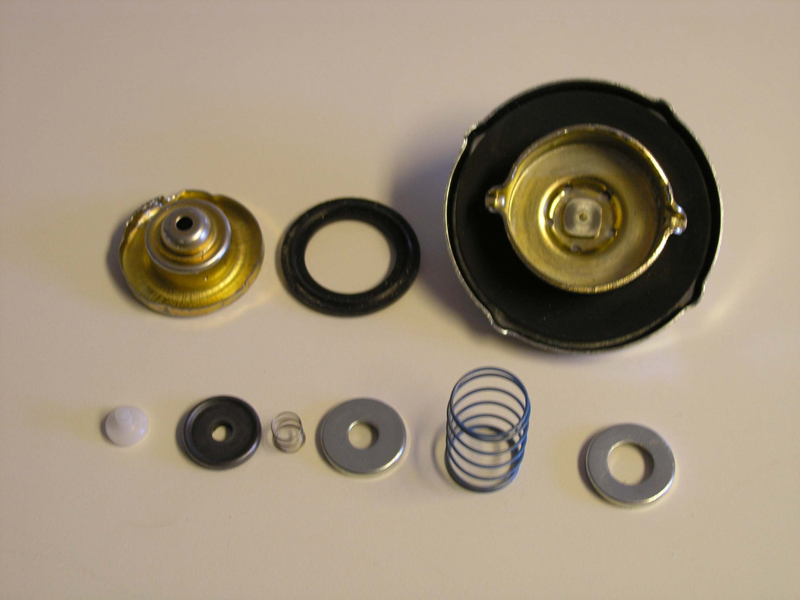
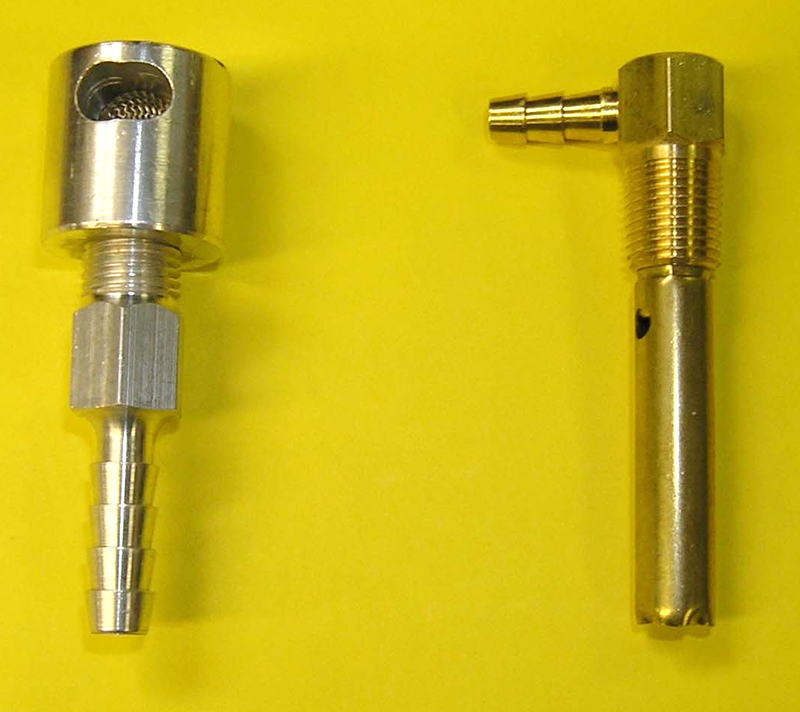




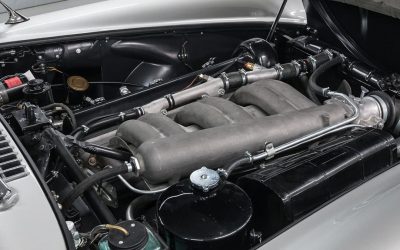

0 Comments